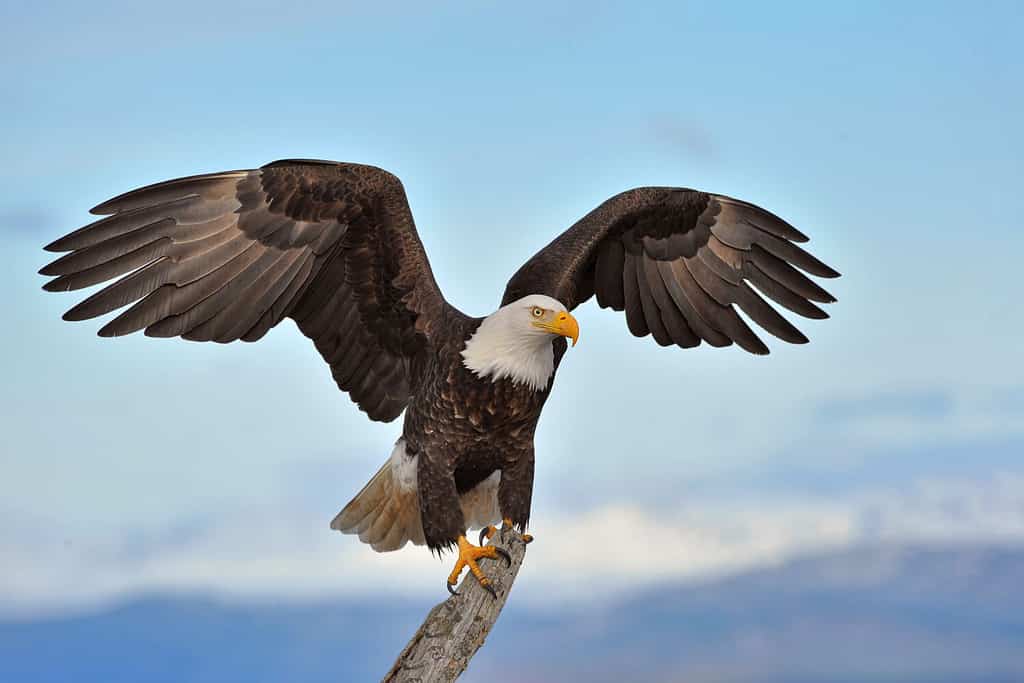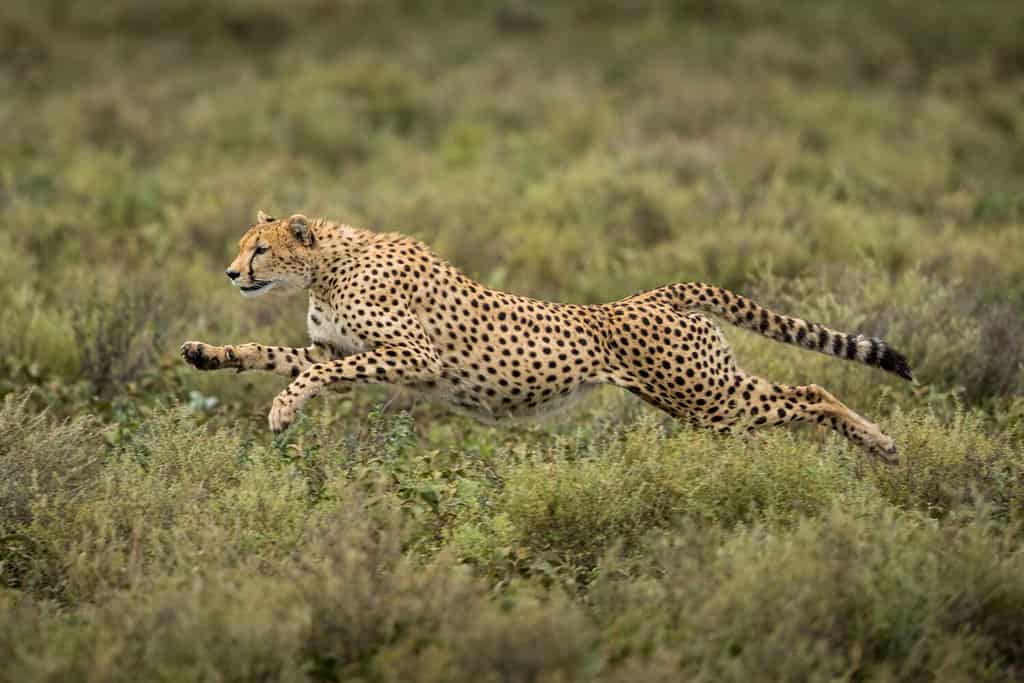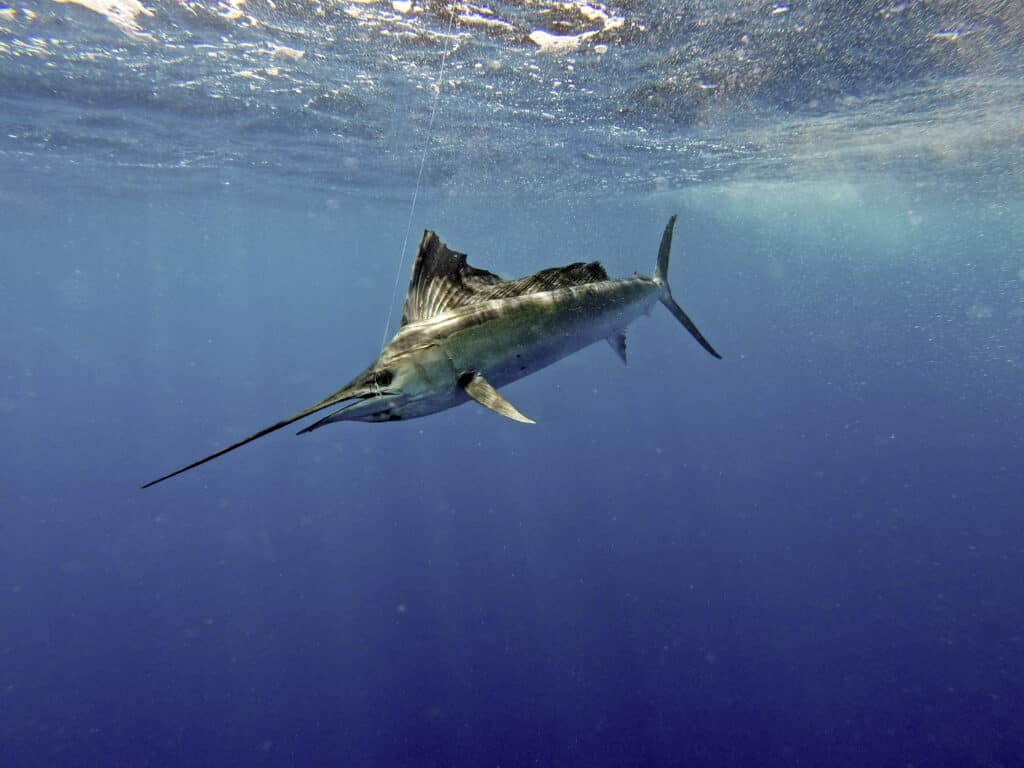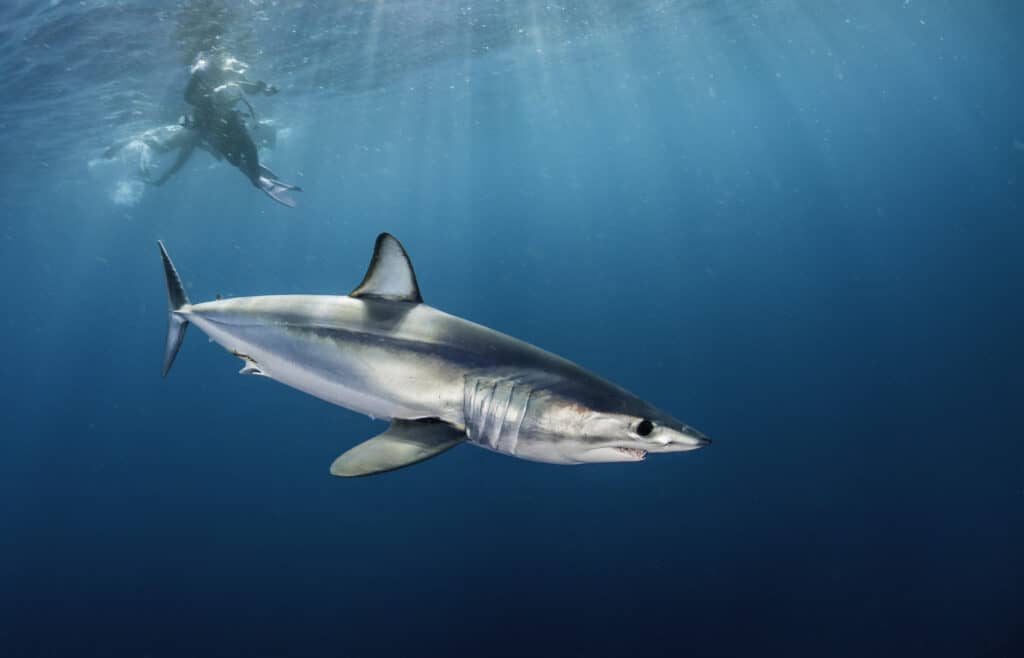Getting to watch an animal run, swim, or fly at tremendous speeds is one of the animal kingdom’s greatest joys for us to be able to watch. Every day we come across amazing things animals are able to do, and speed is just one of them. We’ll take a look at some of the fastest animals. First, though, let’s see one in action — the Mako Shark:
Now let’s compare this shark to some famously speedy animals: the bald eagle, the cheetah, and the sailfish.
The Bald Eagle (Haliaeetus leucocephalus)

Bald eagles are carnivores.
©FloridaStock/Shutterstock.com
This incredibly beautiful and majestic bird weighs between 6.6-14 pounds and reaches 28-38 inches long. The bald eagle can fly up to speeds of 100 miles per hour.
The Cheetah (Acinonyx jubatus)

Cheetahs are carnivores.
©Danita Delimont/Shutterstock.com
This beautifully fur-coated feline weighs approximately 88-140 pounds and reaches up to 45-53 inches long. The amazing land cheetah can run up to 70 miles per hour.
The Sailfish (Istiophorus platypterus)

Sailfish are carnivores.
©kelldallfall/Shutterstock.com
This sleek-looking fish can weigh between 120-220 pounds and reach lengths of 134 inches and heights of 13-20 inches. The sailfish can swim 70 miles per hour.
All of these animals are named top in their territory because of their speed. And we look to them as examples of speed just as we would look at great cars such as Ferraris, Mercedes, and Bugattis.
In the video captured below, the mako shark is chasing a boat at full speed! This boat is going 50 miles per hour! And we see this fish not only keeping up with this boat but almost catching up to surpass it as well!
Mako Sharks

A diver swimming with a Shortfin mako shark. These sharks are aggressive predators and should be avoided if possible.
©wildestanimal/Shutterstock.com
Did you know there are two different types of mako sharks? There is the shortfin mako shark and the longfin mako shark. As you would imagine, the difference between these two animals is in their fins.
According to the NOAA Fisheries, “Shortfin mako sharks can be differentiated from longfin mako sharks. Compared to shortfin mako sharks, longfin mako sharks have much longer pectoral fins and larger eyes, a different body shape, and the underside of their snout is darker.”
The shortfin mako shark, Isurus oxyrinchus, is known to reach speeds of 45 miles per hour. And the longfin mako shark, Isurus paucus, is known to reach speeds of 35 miles per hour.
It is quite amazing to see this team on the boat was able to reach 50 miles per hour and this mako shark able to beat all odds and reach the 50 miles per hour mark!
How Large are Adult Mako Sharks?

Shortfin mako shark. These sharks are aggressive predators and should be avoided if possible.
©wildestanimal/Shutterstock.com
The two species of mako sharks, the shortfin and the longfin, are rather slow growers, with males reaching reproductive age at 8 and females at 19. The mako can reach lengths of up to 12 or 13 feet but the average size is closer to 6 and 7 feet and can weigh between 440 and 1,200 pounds. Longfin makos tend to be the larger of the species.
The largest mako ever caught was found in California, weighing an incredible 1,323 pounds and having a length of over 11 feet, although it wasn’t on record. The largest on record belongs to a Massachusetts fisherman who caught a 1,221 mako, that also reached over 11 feet in length.
The photo featured at the top of this post is © wildestanimal/Shutterstock.com
Thank you for reading! Have some feedback for us? Contact the AZ Animals editorial team.







